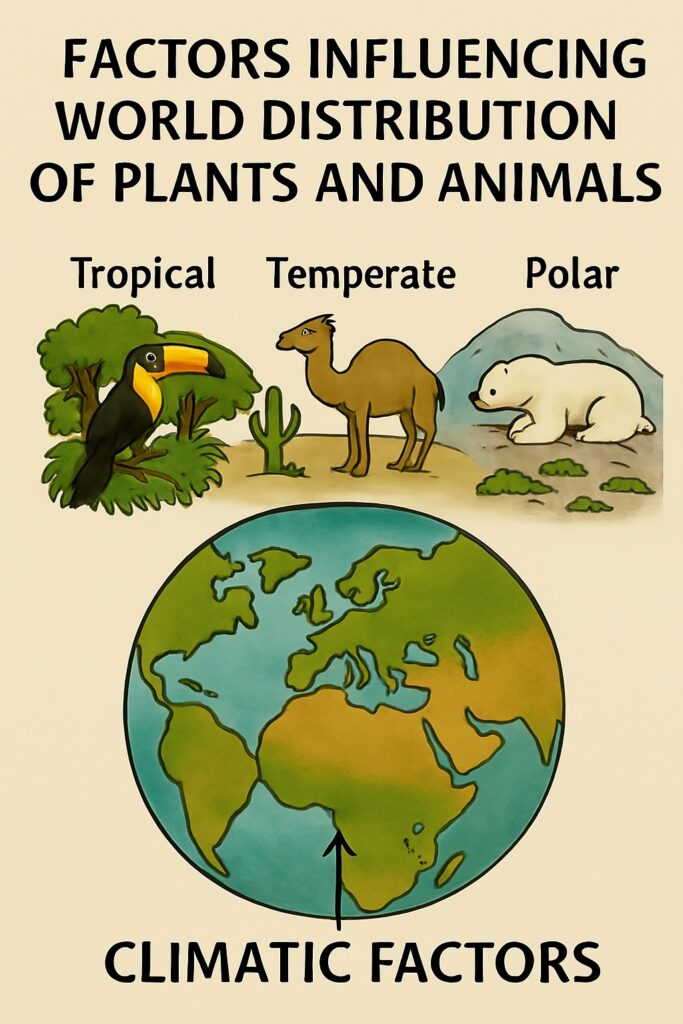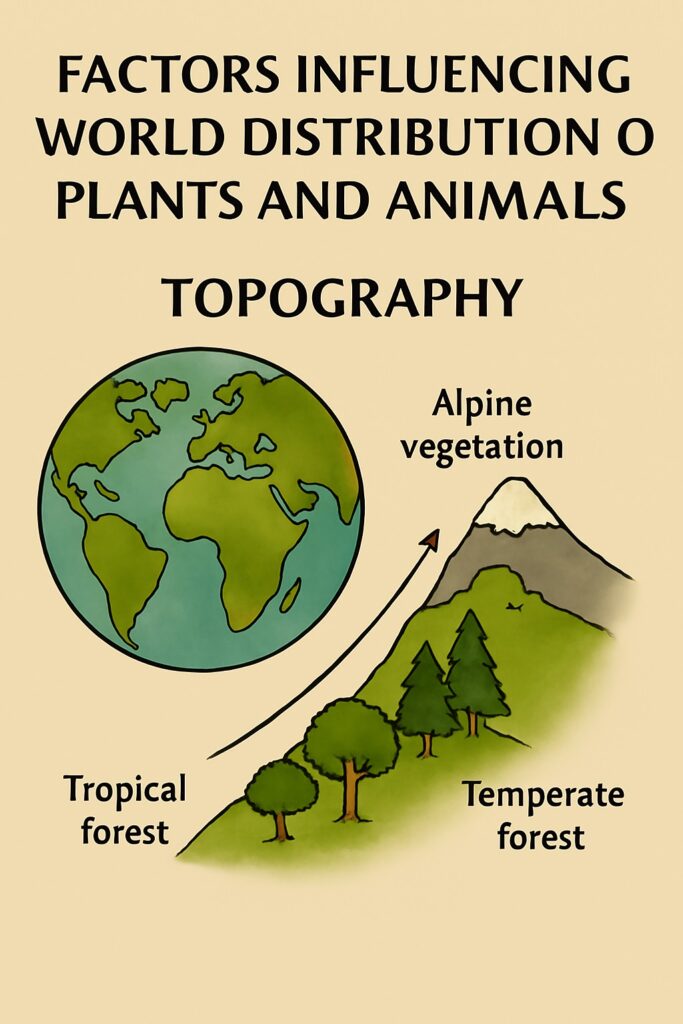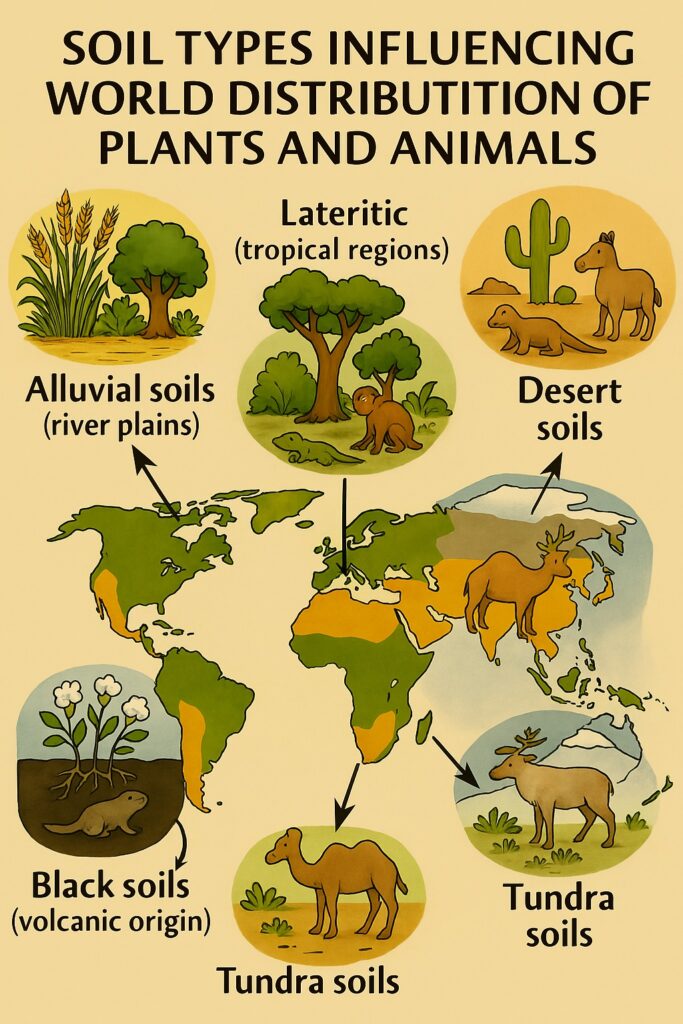In this article, we will discuss the major Factors Influencing World Distribution of Plants and Animals. The distribution of plants and animals across the world is influenced by a complex interplay of biotic and abiotic factors. These factors include climate, geology, topography, soil type, and human activities, among others.
Factors
| Climate | Geology | Soil |
|---|---|---|
| Temperature, Humidity | Mountain, Plateau | Sand, Clay |

Table of Contents
Factors Influencing World Distribution of Plants and Animals
Understanding the factors that influence the distribution of plants and animals is crucial for conservation efforts, as well as for predicting the impacts of environmental changes on biodiversity.
Climate
Climate is a major factor influencing the distribution of plants and animals. Different plant and animal species are adapted to specific temperature regimes, rainfall patterns, and other climatic conditions. For example, tropical regions are characterized by high temperatures and high rainfall, while arid regions have low rainfall and high temperatures. Animals and plants in these regions have evolved specific adaptations to survive in these conditions.

Geology
Geology is another factor influencing the distribution of plants and animals. Different geological formations, such as mountains, plateaus, and valleys, create distinct habitats that are home to specific plant and animal species. For example, montane forests, found on mountain slopes, are home to a rich diversity of plant and animal species, while desert regions are characterized by low biodiversity.
Topography
Topography refers to the physical features of the land, including mountains, valleys, and plateaus. Different topographical features create distinct habitats that are home to specific plant and animal species. For example, montane forests are found on mountain slopes and are characterized by high rainfall and cool temperatures, while desert regions are characterized by low rainfall and high temperatures.

Soil Type
Soil type is another factor influencing the distribution of plants and animals. Different soil types, such as sand, clay, and loam, have different physical and chemical properties that affect the growth and survival of plants and animals. For example, certain plant species are adapted to grow in nutrient-poor soils, while others are adapted to grow in nutrient-rich soils.

Human Activities
Human activities, such as deforestation, urbanization, and agriculture, have a significant impact on the distribution of plants and animals. These activities alter the physical and chemical characteristics of the environment, leading to the loss of habitats and the extinction of species. Additionally, human activities can introduce new species to an ecosystem, leading to changes in the distribution of native species.
Conclusion
The distribution of plants and animals across the world is influenced by a complex interplay of biotic and abiotic factors, including climate, geology, topography, soil type, and human activities. Understanding these factors is crucial for conservation efforts and for predicting the impacts of environmental changes on biodiversity. By managing our natural resources sustainably, we can ensure the health and survival of plant and animal species for future generations.
Read: Geography Notes